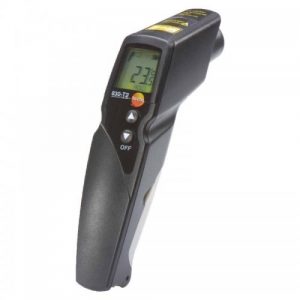An instrumentchoice.com.au infrared thermometer, or a non-contact thermometer, is a device used to measure a person’s body temperature without touching the person being measured. This feature is advantageous since there are fewer chances of contracting an infection or infectious diseases from one person to another. There are infrared thermometers for home and clinic use. You can purchase these devices online. If you’re not sure about the benefits of infrared thermometers, check out the following frequently asked questions.
 To avoid damaging your infrared thermometer, protect it from knocks and drops. Also, make sure that you store it in a place where it is safe from shocks. And don’t forget to clean your infrared thermometer lens now and then. And remember, don’t over-clean the lens, as this may damage the device. And always make sure that you clean the unit only when necessary.
To avoid damaging your infrared thermometer, protect it from knocks and drops. Also, make sure that you store it in a place where it is safe from shocks. And don’t forget to clean your infrared thermometer lens now and then. And remember, don’t over-clean the lens, as this may damage the device. And always make sure that you clean the unit only when necessary.
Disadvantages of infrared thermometers
An infrared thermometer is a good choice for many home uses, including checking the temperature of food, measuring the temperature of surfaces such as metals, and developing photo prints. Its simplicity makes it easy to use, and it can accurately read temperature changes of both the surface and air. It is particularly useful for measuring the temperature of a room or an area, such as a kitchen or bathroom, without touching the surface. However, there are some drawbacks to an infrared thermometer.
Unlike conventional contact thermometers, infrared sensors determine the temperature of an object by analysing its infrared radiation. As a result, they are generally more accurate than their contact counterparts. They can be used without disturbing the measured surface, and they save resources, money, and personnel. Although these thermometers are often more accurate than their contact counterparts, they still have a few disadvantages.
Another disadvantage of an infrared thermometer is its relative cost. It is generally more expensive than other thermometers, ranging from 500 to 1000 IDR. In addition, infrared thermometers need a clean environment with high humidity to be accurate, and they can be expensive. They are also susceptible to interference from smoke, frost, and other particles in the air. But they are still a useful tool when used properly.
How they work
The basic working principle of an instrumentchoice.com.au infrared thermometer is that it measures the amount of thermal energy that an object emits relatively to the distance it is from the sample. Emissivity measures how reflective a surface is, with 0 representing perfect reflectivity and one meaning it absorbs all incoming radiation. As a result, the temperature of an object with a diameter of one inch is the same as that of an object 12 inches away.
Infrared thermometers work by sampling two wavelengths of energy from a hot object and comparing them to a detector attached to the back of the device. A lens on the front of a pyrometer focuses infrared energy on the thermopile detector. The detector converts this energy into an electrical signal, which is displayed in temperature units. Signal processing stabilises and amplifies the energy before it reaches the measurement device.
While pyrometers can read temperatures on objects at a distance, they have limited accuracy in dusty environments, limiting their use to inconvenient places. Infrared thermometers have greater D-S ratios, so they are often used to measure temperatures in environments where the temperature is a concern. However, they are less accurate than thermocouples and thermal imaging. This is because the distance and size of an object influence the accuracy of the reading.
How to clean them
If your infrared thermometer needs cleaning, here are some easy tips for cleaning it. Using rubbing alcohol or a cotton swab dipped in isopropyl alcohol will remove most of the dirt and bacteria on your thermometer. Wiping the device dry with a clean cloth is also a good idea, but you should ensure that you don’t get any water on the digital components.
You should clean your infrared thermometer regularly to ensure accuracy. You should clean the lens and the body using a soft cloth or cotton swab. Never use chemicals or other solvents to clean your infrared thermometer. You should clean your industrial or clinical IR thermometer at least once every six months. It is best to follow the manufacturers’ instructions and any policies at your facility.
To avoid damaging your instrumentchoice.com.au infrared thermometer, protect it from knocks and drops. Also, make sure that you store it in a place where it is safe from shocks. And don’t forget to clean your infrared thermometer lens now and then. And remember, don’t over-clean the lens, as this may damage the device. And always make sure that you clean the unit only when necessary.